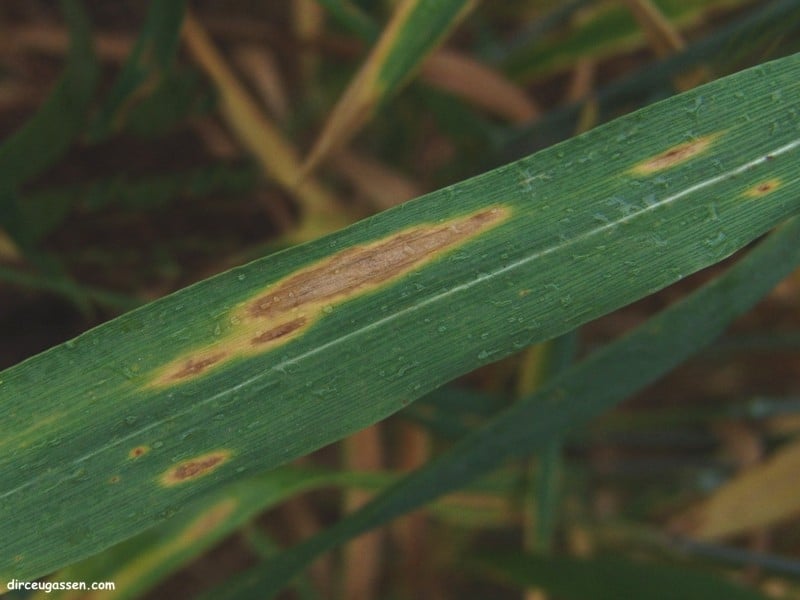Stop the Spot!
Growers and advisors are being encouraged to send in samples of leaves with yellow spot and join researchers in the fight against yellow spot.
Results from the first year of the Stop the Spot campaign have shown that national monitoring of yellow spot is essential, with preliminary analysis suggesting there may be an increase in the severity of the disease.
The Curtin University and Grains Research and Development Corporation (GRDC) campaign will continue in 2015, aiming to develop tools and markers for wheat breeders to help them release more resistant varieties for growers.
Caroline Moffat, leader of the Yellow Spot program at the Centre for Crop and Disease Management, said from the 189 samples received in 2014, there was evidence of a change in virulence between Australia’s western and eastern cropping areas, making 2015’s Stop the Spot more important than ever.
“One of the more interesting findings from 2014 was that yellow spot isolates were recovered even from moderately resistant varieties,” Dr Moffat said.
“This just shows how vital it is that we continually monitor yellow spot across the country so that we are best placed to respond to any changes in the pathogen population – the more samples we receive, the better we can keep track of new strains and stay vigilant,” she said.
How Stop the Spot helps researchers fight yellow spot, genetically
Yellow spot causes national wheat crop losses of $212 million, plus control costs of $463 million per annum. In hard hits areas, losses can exceed $30 per hectare.
By sending in leaf samples of yellow spot, researchers at the CCDM will be able to develop genetic tools for breeders, monitor biosecurity risks and have an understanding of how the pathogen may be changing in the paddock.
The yellow spot fungus disease, caused by the necrotrophic fungal pathogen Pyrenophora tritici-repentis, is stubble-borne and secretes “effectors” – which are proteins secreted by the fungal pathogen that cause disease symptoms.
These effectors kill the cells of the wheat host, allowing the fungus to colonise the plant and feed from it.
Dr Moffat said three effectors have already been found and described, with the most damaging effector –ToxA , which is supplied to wheat breeders to allow them to discard varieties that show sensitivity to this protein.
“However, results from Stop the Spot 2014 showed signs of other unidentified effectors, which my team will try to identify and provide to breeders on the path to creating more resistant varieties,” she said.
Key Findings from the results
For the full report, click here. The main findings following genetic and molecular analysis of 189 samples across Australia include:
- Yellow Spot infection was widespread across Australia
- Even moderately resistant wheat varieties were infected
- The presence of ToxA all of the 2014 Yellow Spot strains reiterates the importance of using ToxA insensitive varieties in areas under high disease pressure, such as Mace and Magenta.
- ToxB, another effector that has been identified and described, was not detected in any sample, but poses a biosecurity risk
- Preliminary analysis suggests an increase in strain virulence and one to two pathotypes
- There are still unidentified effectors produced by Australian strains of Yellow Spot.
I have yellow spot, what do I do now?
Please visit www.stopthespot.com.au for sampling instructions. Besides helping researchers develop new genetic tools that improve wheat yields, you will also receive feedback on your sample, confirming if it is yellow spot or not.
For information on how to manage the disease visit:
GRDC Yellow Spot Fact Sheet: www.grdc.com.au/GRDC-FS-YellowSpotWest
GRDC Cereal Foliar Fungal Diseases Supplement: www.grdc.com.au/GCS110
